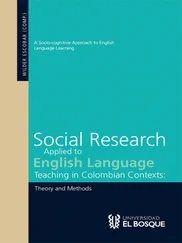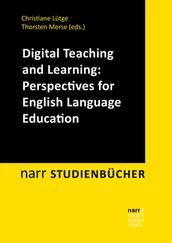(TAG RESPONSE:
‘Yes, he does’/‘No, he doesn’t’)
And we also use dowhen we start a sentence with a question word such as how . . . ?:
How do you know Jo?
How does Charlie go to work?
The negative of the present simple uses don’t/ doesn’t/`dəυnt/
/`dznt/:
I don’t speak Italian.
My sister doesn’t speak Italian either.
Be careful!The present simple is not used to describe actions
that are taking place now. We will see how to do this in the next unit.
Exercise 2
Look at the answers and complete the questions. The first one is done for you.
1 Where does Fred work?
(Fred)
He works in a shop.
2 ____________________ ?
(drink tea)
No, I don’t.
3 ____________________ ?
(that bus/station)
Yes, it goes to the station.
4 ____________________ ?
(Spanish)
No, she only speaks French.
5 ____________________ ?
(Pete and Sally/Italian)
No, they speak Esperanto.
6 Where ______________ ?
I teach in a school.
25
7 Where ______________ ?
(this bus)
It goes to the town centre.
8 ____________________ ?
(Su/nearby)
Yes, she lives next door.
9 When _______________ ?
(Mick and Sandra)
They leave at nine o’clock.
10 When _______________ ?
(the post)
It arrives early in the morning.
Exercise 3
Here are some things Stephen and his friends do and don’t do.
Complete the sentences using the information from the box.
does [+]
doesn’t do [–]
Stephen
speak Russian
play the piano
James
drink coffee
speak Russian
Oliver
wear glasses
drink coffee
Jenny
play the piano
wear glasses
1
[+]
Stephen speaks Russian
2
[–]
Oliver
___________
3
[–]
James
___________
4
[+]
Jenny
___________
5
[–]
Stephen
___________
6
[–]
Jenny
___________
7
[+]
James
___________
8
[+]
Oliver
___________
26
Dialogue 5
Chris and Julie are looking through Chris’s family photos.
JULIE:
That’s your brother Dave, isn’t it?
CHRIS:
Yes, it is.
JULIE:
And who’s that with him?
CHRIS:
That’s his wife. She’s called Debbie, and she’s from Australia.
JULIE:
Do they live here?
CHRIS:
No, they live in Australia – in Sydney. He’s a lorry driver, and she’s a nurse.
JULIE:
Do they both work in Sydney?
CHRIS:
No – Debbie works in one of the hospitals, but Dave drives all over the country.
JULIE:
Have they got any children?
CHRIS:
Two boys.
[ Julie turns the page ] Here they are – Simon and James.
JULIE:
How handsome they are!
CHRIS:
Thank you!
Language point 13 – weak forms
A number of very common short words in English have two pronunciations: a FULL PRONUNCIATION when they are given special emphasis, and a more common WEAK PRONUNCIATION otherwise.
Here are some that we have had already – if you have the cassettes/
CDs, listen again to the Dialogues we have had so far and see if you can hear the weak pronunciations.
Full
Weak
the
/ði/
/ð/, /ðə/
to
/tu/
/tə/
at
/t/
/ət/
for
/fɔr/
/fə/
and
/nd/
/ən(d)/
do
/du/
/də/
or
/ɔr/
/ə/
of
/ɔv/
/əv/
your
/jɔr/
/jər/
him
/hm/
/m/
her
/hεr/
/ər/
from
/frɔm/
/frəm/
27
Dialogue 6
Two people meet one morning in a crowded café in London.
ANDY: Do you mind if I sit here?
BETH:
Not at all.
ANDY: It’s busy in here, isn’t it?
BETH:
It’s always like this in the mornings.
ANDY: Do you live round here?
BETH:
No – I live a few miles away. But I work just round the corner. What about you?
ANDY: I’m visiting friends for the day.
BETH:
Where do you come from, then?
ANDY: From Bristol. But I live in Cambridge now, because that’s where I work.
BETH:
So what do you do?
ANDY: I’m a doctor. What about you?
BETH:
I work for a publisher’s.
28
Language point 14 – forms of the verb
There are five main forms of the verb in English – let’s look at them quickly, using an ordinary REGULAR VERB, talk: BASE-FORM
talk–
this is the simplest form of the verb, with
no endings added
S-FORM
talks
ING-FORM
talking
ED-FORM
talked
TO-FORM
to talk– this is the same as the base-form, but with toin front
However, a lot of common verbs in English are IRREGULAR in the ED-FORM (for example, speakchanges to spoke, not ‘speaked’), and there are spelling rules as well (for example, stop,but stopping not
‘stoping’).
We will deal with all these things as the course goes on – all you have to do for now is remember the names of the forms and what they look like with a regular verb.
In this unit we have seen the base-form and the S-FORM. We saw that the s-form is used in the PRESENT SIMPLE in the third person singular, but that otherwise the present simple is the same as the base-form; and we saw Andy in Dialogue 6 use the base-form after Do you mind if I . . . ?
In the next unit we will look at the ING-FORM.
Dialogue 7
Jane brings the coffees over – but she can’t remember who ordered what.
JANE:
Here we are, then. Now . . . whose is the latte?
FRED:
That’s mine.
JANE:
And the cappuccino is yours, Su, isn’t it?
SU:
No, that’s mine there – the mocha.
JANE:
Right. And mine is the Americano, so the espresso is yours, Rod.
ROD:
That’s right. Now . . . where’s the sugar?
29
Language point 15 – wh-questions
When we ask for information, there is a set of special words that can be used to start the question:
where?
/wεər/
what?
/wɔt/
when?
/wεn/
why?
/wa/
who?
/hu/
whose?
/huz/
(this word means
‘belonging to who?’)
Читать дальше












